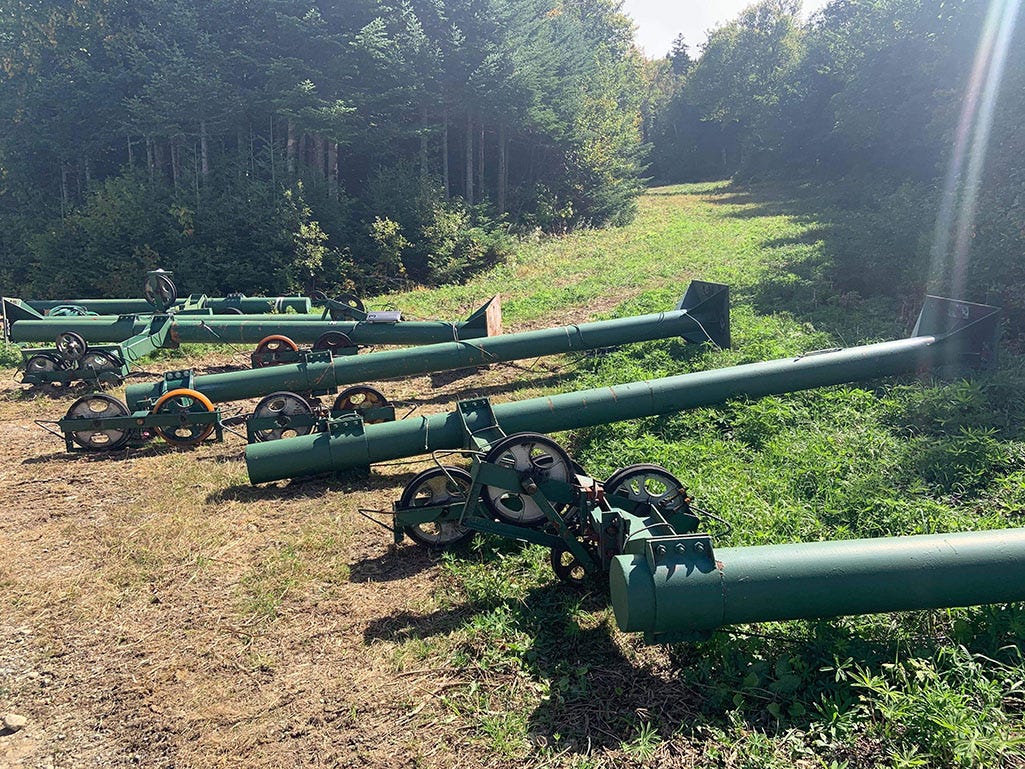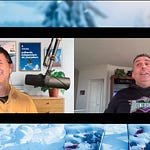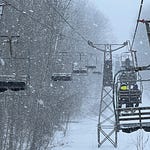The Storm Skiing Podcast is sponsored by Mountain Gazette - Listen to the podcast for discount codes on subscriptions and merch.

Who
Mike Lavertu, President of the board of directors of Lonesome Pine Trails, Maine
Recorded on
July 13, 2021
Why I interviewed him
If you’ve ever skied Maine, you probably felt as though you’d arrived at the end of the earth. And if you’ve skied Maine, you’ve probably skied Sunday River or Sugarloaf or Saddleback. And sure, they’re all remote. But from the point of view of New England’s largest state, you’re just getting moving: Lonesome pine is another five hours and 40 minutes past Sunday River, five hours 10 minutes past Sugarloaf, and five and a half hours from Saddleback. When you finally get there, you’re reached the top of America. Fort Kent sits hard by the St. John River, across the water from Canada. The ski area rises directly over the town, 500 vertical feet and a dozen trails and 10 snowguns and a T-bar. It’s a simple operation, but one that’s served its community for more than 50 years, and without the bankruptcies and debts and harebrained owners that have sunk operations large and small across New England. It is at once homey and exotic, a snowy town square perched across the street from a neighborhood, north-facing toward the world’s longest frontier. I’ve never skied there, but I’ve long wondered about this humble-brash little mountain that sits quietly in the snowy north, pushing operations into April as larger mountains shut down across New England. When Mike reached out to see if I’d be interested in an interview, I agreed immediately.

What we talked about
Lonesome Pine as labor of love; the small ski area’s surprisingly robust race program; how to transform a 1960s T-bar so it doesn’t jerk its riders up the hill; Lonesome Pine’s unique ownership structure; the mountain’s huge volunteer squad; how Fort Kent supports Lonesome Pine; how the tiny ski area stabilized its finances; yes it can even get too cold for Maine skiers; season passes; everyone needs a bar (the kind with alcohol); how a small ski area wrangles something as spectacularly expensive as a replacement groomer; how Saddleback’s Cupsuptic T-bar became a pile of parts at the base of Lonesome Pine; the caravan that carried the lift across the state; trying to figure out the origin of the T-bar that the ski area installed used more than 30 years ago; whether the ski area would ever replace the T-bar with a chairlift; dreaming of a magic carpet upgrade; the possibility of adding tubing and skating to the ski area; using volunteers to run the snowmaking operation; pushing skiing to April; the mountain’s limited operating schedule; operating during Covid; why the Canadian border closure may have worked in Lonesome Pine’s favor; and the expansive and mysterious Canadian ski world.
Why I thought that now was a good time for this interview
A few months back, I put out a call at the end of one of the podcasts: if you ran a ski area anywhere in America, I wanted to talk to you. I didn’t care how small or remote it was. I am here to tell the full story of lift-served skiing in America. I love the Epic Pass and its flagship Western cloud-scrapers as much as I love the cowboy indies like Plattekill and the town bumps like Lonesome Pine. Mike took me seriously, and I’m glad he did – it’s far easier to track down the GM of Killington or Sugarbush or Sunday River than it is to figure out who runs Titus or Whaleback. The former, after all, are parts of conglomerates and have all the modern communications and marketing infrastructure that comes with that. An end-of-the-road bump with an antique website, run largely by volunteers, it’s never been obvious to outsiders who ran Lonesome Pine. I’d tried, in the past, to figure it out. But it’s a good story and I was thrilled when Mike reached out. If you’re the Mike of some other little ski area in the U.S. or Canada or hell Slovenia or Japan, hit me up. I want to share what you have to say.

What I got wrong
The origin of Lonesome Pine’s T-bar seemed like one of those mysteries lost to time. A 1960s-era Hall 1000, it arrived at the ski area in the mid-80s. On that, there is consensus across various online sources. But where was it for the two decades prior? In the interview, Mike speculated that it came from Vermont. In follow-up emails, he had leads telling him it came to Lonesome Pine from Pennsylvania via a Vermont broker. More digging revealed the true source: Victor Constant, the little-known but still-operating ski area at West Point, New York. This made sense: that ski area’s triple chair arrived in 1983. While I believe this is correct, I can’t find a historical trailmap showing a T-bar at Victor Constant – just this 2016 trailmap, which is the same one in use today. If anyone has any additional information on the Victor Constant T-bar – year of installation, old trailmaps, general memories – please let me know.

Why you should ski there
For all its bucolic coziness, there are not a lot of in-town ski areas in New England. Cranmore and Bousquet are two of them. Are there others? It’s one of the great shortcomings of eastern skiing. At Aspen or Park City, you ski to the bottom and walk to the bar in a city that predates lift-served skiing by half a century. In most of the Northeast, ski areas sit isolated in the countryside, a car ride from everything. Lonesome Pine is one of the few that defies this template. It’s feasible that a kid could grow up across the street. It’s right down the road from the local school. Bars and downtown sit within walking distance. A visit to Lonesome Pine will give skiers a pretty good sense of what a more imaginatively human-scaled version of Northeast skiing could be.













